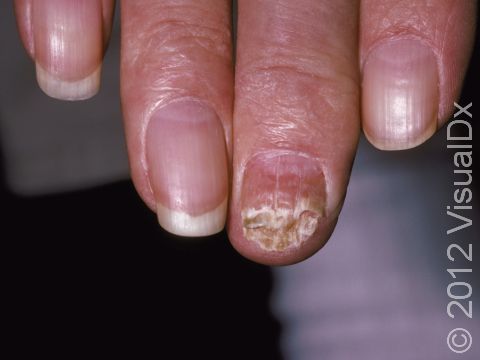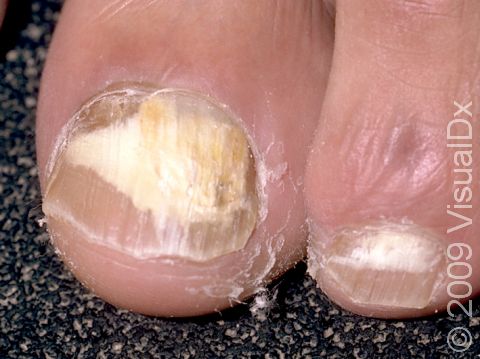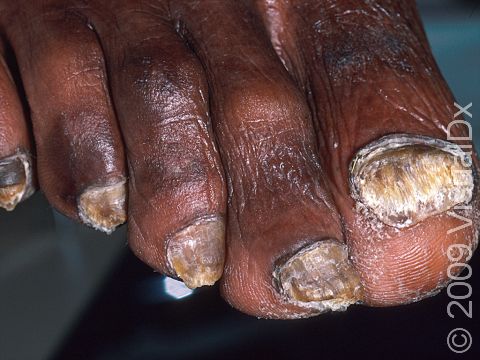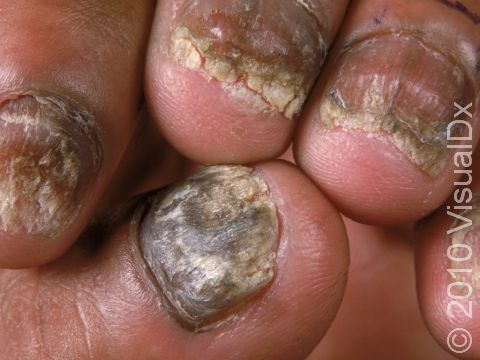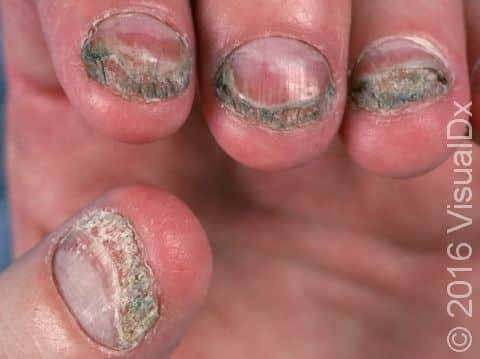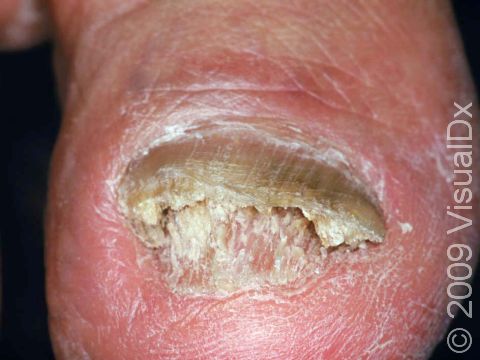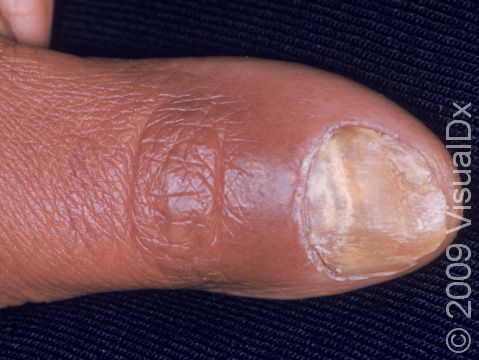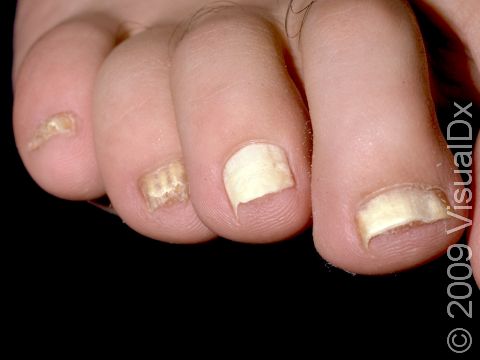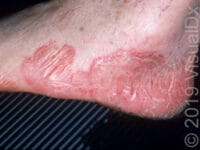
Nail Infection, Fungal (Onychomycosis)
Onychomycosis, commonly known as a fungal nail infection, is infection of the fingernails or toenails by forms of fungi and yeast. Fungal nail infections account for nearly one-half of all nail disorders. In the most common form of fungal nail infections, fungus grows under the growing portion of the nail and spreads up the finger (proximally) along the nail bed and the grooves on the sides of the nails. A less common type of fungal nail infection may occur in those with HIV/AIDS.
Who's At Risk?
Fungal nail infection may occur at any age but is more common in adults, particularly in older individuals. Diabetics may be more likely than other people to develop a fungal nail infection.
Signs & Symptoms
- In general, toenails are most commonly affected with fungal nail infection. If the fingernails are affected, the toenails are usually affected as well. Nails often become thicker and lift from the nail bed (onycholysis) starting at the growing portion of the nail. You might then see debris under the nails and discoloration of the affected area.
- In some forms of fungal nail infection, you might see black or white, powdery discoloration on the surface of the nail plate.
- In some forms of fungal nail infection, you might see these abnormal changes farther up the finger (proximally), where the nail originates.
- Fungal nail infection may occur in people with athlete’s foot (tinea pedis) and/or oozing infection (paronychia), caused by inflammation and infection with yeast and/or bacteria in the region where the skin of the finger meets the origin of the nail.
- In fungal nail infection, one, a few, or all nails may be affected.
Self-Care Guidelines
- None necessary except good hygiene and regular washing of the hands and feet.
Treatments
- Topical therapy with ciclopirox nail lacquer, which requires daily application for 9–12 months.
- Oral antifungal treatments offer the best chance for curing fungal nail infection. The most commonly used agents are terbinafine, itraconazole, and fluconazole. The medications may cause liver problems or may affect blood cell counts. Blood tests are usually performed before starting therapy and during therapy to look for possible side effects.
- In stubborn (refractory) fungal nail infection, surgical removal of part of the nail or the entire nail, removing the nail by applying a chemical, or thinning the nail by applying 40% urea ointment may be used, in addition topical or oral antifungal agents.
Visit Urgency
Fungal nail infection does not always require treatment, but see your doctor for any nail disorder. Diabetics with foot problems should be evaluated because of the possible risk for developing foot ulcers. Your doctor may perform testing, such as scraping a nail to examine for fungi or clipping a nail to look for bacterial or fungal growth (culture) or to obtain a special stain to look for fungi under a microscope.
Trusted Links
References
Bolognia, Jean L., ed. Dermatology, pp.1062, 1072. New York: Mosby, 2003.
Last modified on October 10th, 2022 at 7:17 pm

Not sure what to look for?
Try our new Rash and Skin Condition Finder
